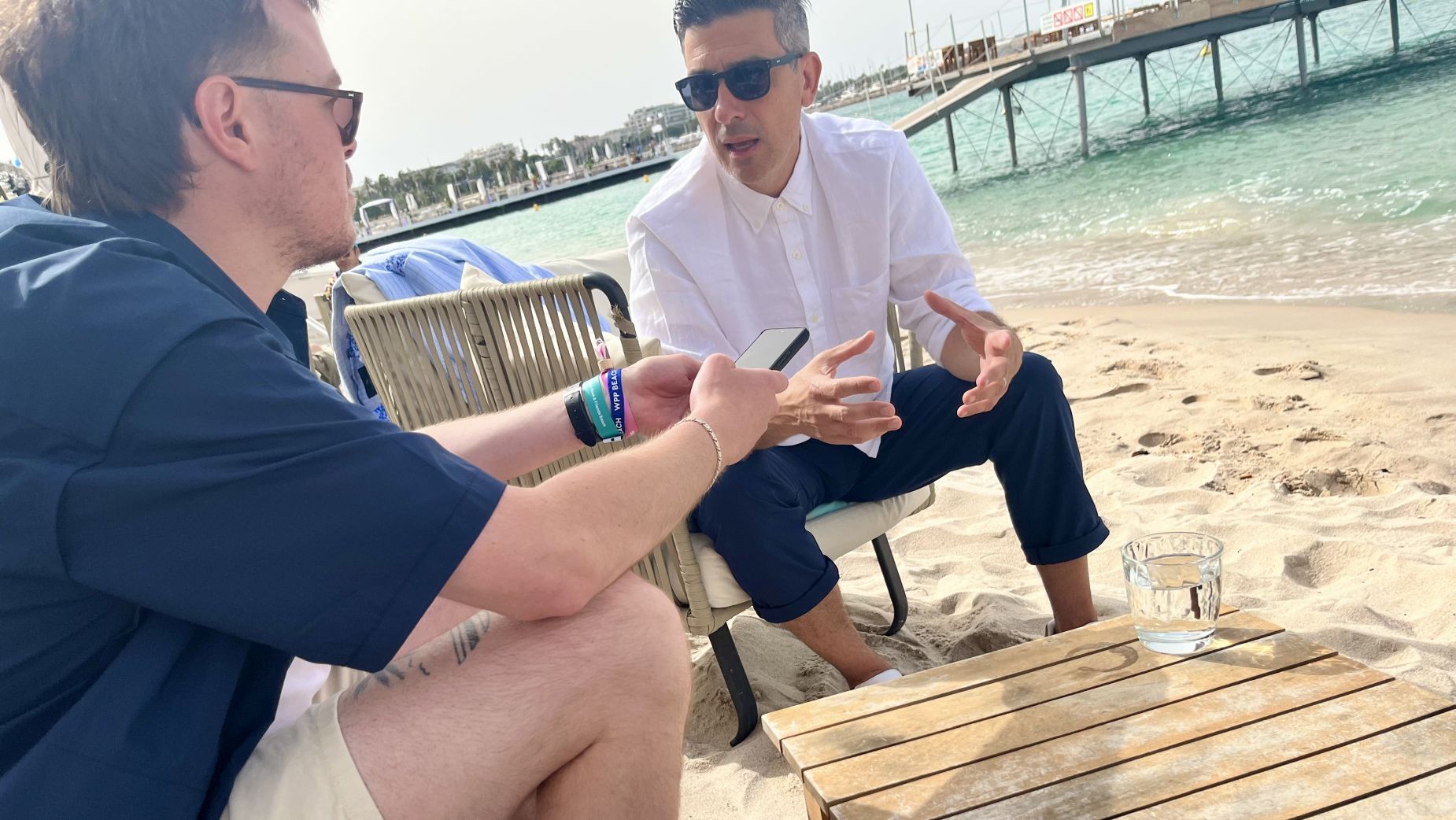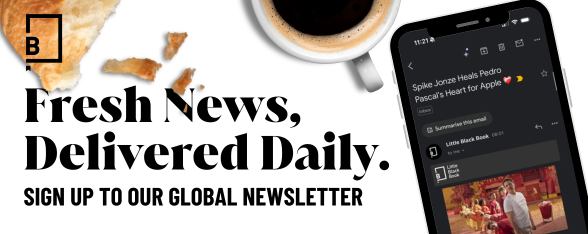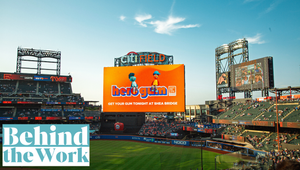
“Run by Music Lovers for Music Lovers”: Jim Mollica on Marketing the Magic of Bose

When Jim Mollica joined Bose around three-and-a-half years ago, he became the company’s first ever CMO, despite the brand turning the grand age of 60 this year. According to Jim, any CMO entering a similar situation ought to realise one thing: they’re walking into an organisation that was truly driven by the product or service that they created to the point that it could drive the story itself.
In the case of Bose, this is true. It was founded in 1964 while founder Amar Gopal Bose was studying electrical engineering at Massachusetts Institute of Technology and has developed into one of the preeminent brands in audio. Some time ago, that equity around product performance might have been enough when it came to brand storytelling. But with the proliferation of the internet, media, and sales channels and, specifically for Bose, the wider audio industry becoming more saturated, the need for more cohesive and extensive storytelling and marketing strategy became necessary.
“It sort of explodes - the amount of noise and content and competitors that are out there,” says Jim. “Luckily for us at 60, we started from an incredible functional expertise. And if you're going to do it one way or the other - either great functional expertise or incredible emotional storytelling - you kind of want to start with the incredible functional expertise, especially in this day and age, with reviews and the ease with which people can figure out inferior products.”
So, one of Jim’s key jobs when he arrived at Bose was to bridge that gap and begin to figure out how the company could talk about the incredible products it created, how people feel when using them and what they enable users to do versus a bunch of tech specs. “Yes, there are a bunch of things where we are the world champion in, like in noise cancellation,” he says. “And that's important. But at a certain level, it's important to ask, what is that doing for you?”
Every product that we are advertised as consumers is subjective, otherwise the art of advertising itself would not exist. But this is perhaps no more true than when it comes to sound. Which, according to Jim, makes Bose’s 60-year history of innovation and dedication to one thing - sound - even more important. It makes his life as CMO easier. “That has given us credibility and brand equity so that there's a level of trust among a certain part of the consumer base,” says Jim. “The demonstration is important, but there's an element of understanding what we are - a premium preeminent brand in audio.”
What’s more, when Bose looks at its competitors in the audio space, it sees few truly audio companies. It sees tech companies, which make phone and laptops, washing machines and refrigerators, that are movie studios and ad networks. “They treat music as a side hustle,” says Jim. “For me, when you are passionate about a topic, you put your heart and soul into the discovery of it, the experience of it. It marks passages of time for you and it's extremely powerful. The idea is that we are here for that community of passionate music fans. We think that they will really appreciate this company that is solely dedicated to what they have dedicated major aspects of their life to - both time and money.”
Bose, however, is a company solely focused on creating incredible sound experiences - and it’s all about the emotion that it drives. “It's not a product focused on tech specs,” adds Jim. “It's more about, how did you feel when you first heard ‘X’ record? Or when you're on a beach and having a little get together with friends, and you're elevating that moment, because you've created an incredible playlist for that moment, or that occasion, or a dinner party that sets the vibe, or in the gym and pushing through one more set. Maybe you're wallowing in the misery of an awful breakup and listening to the sad playlist.
“It's this emotional elevator, and we believe that for people like me - who is a self-proclaimed music geek - it’s important, to some people, not everybody. And that's fine, because we're not for everyone. But those that understand are part of that tribe. They get it.”
When Jim joined Bose, it had tremendous brand equity with audiophiles of a certain age, but less familiarity from 18 to 24-year-olds. But instead of digging deeper into demographics, Jim and the team focused more on behavioural and attitudinal attributes. “I think it’s actually pretty easy to identify rabid music fans at various ages, just by their behaviours and interests,” says Jim.
So, his job was to begin exposing this community of music fans to Bose and start introducing the Bose brand to them in a more ‘modern way’. That involves, he says, everything from working with creators to the channels that Bose was creating content for, to the artists it was working with. “I think one of the mistakes that brands make is they tell you who they are,” says Jim. “I prefer to just show you through actions, who we are. That validates it without having to say a word.”
A key focus to help achieve is by working with and having a particular focus on what Jim call’s “artists’ artists” - ones that may not be overtly popular in the mainstream but are particularly so among a trusted crowd. “And then also breaking artists that are emerging as we're a bit like curators of music in all genres, including long tail genres,” says Jim. “Everything from hip hop to K-pop to country all the way to experimental jazz and noise. It all matters and each music fan either has a smattering of genres that they really care about or they're going deep into one. By showing that kind of selection and thought process around it, I think it sends a signal to that music community that this is really run by a fiercely independent 60-year-old company that is based in music.”
When it comes to selecting artists for Bose to work and partner with, Jim shouts out the company’s “‘incredible music team” who are “really dialled into the industry and have been around for a long time”. But at its core, much like all great marketing in 2024, it’s a mixture of creativity and science. “They [the music team] have a great beat on who is emerging, what records are dropping, and what other artists are talking about a particular artist,” he says. “So, there's a bit of creativity and subjectivity in parts to it - lots of discussions on the music and the artists and the type of genres that we select. Then part of it is science. How they are doing and their engagement on social media overall. There are some levels of minimum threshold, but there are also some things that are niche, and we do to send signals to those niche audiences.
“It's a bit of art and science with the way we approach it and I think that's the fun part. Our job is really fun as we get to select and play with interesting artists that we're into. And I think that sends, again, that signal to those audiences that we are really a company that is run by music lovers for music lovers.”
Product collaborations have also played their part in bringing the Bose brand to different communities and audiences. But Jim is keen to stress that collabs - which are a prevalent form of marketing across a number of industries today - only work if they involve a meaningful backstory and feel natural. “There are a lot of collabs that are out there that don't really have a story to them and it feels odd,” he says. “Why are they connected and what is the backstory? Collaborations done really well help bring two brands or artists that have similar sensibilities around a topic or theme and introduce them to each other's audience in a way that gives incredible credibility and interest in the backstory. People love that - when you buy a product like that, you want to have some kind of backstory of how they came together.”
For example, back in January Bose collaborated with US fashion and lifestyle brand Kith on a pair of limited edition Ultra Open Earbuds. Jim met Kith founder Ronnie Fieg and they hit it off over music, immediately exchanging '90s hip hop playlists and going deep on their backgrounds and telling funny stories about them growing up with music. “He is an incredible designer and merchandiser and has incredible taste, and he uses all of this music to inspire him and his creativity. So it was incredibly natural that these two things would come together,” says Jim. What’s more, the reason they launched a pair of Ultra Open Earbuds was because Ronnie likes to be available to people around him during work, rather than shutting him away with the noise cancelling technology of other Bose products.
Finally, I put my most important and perhaps most difficult question to Jim. What is he listening to right now?
“I am all over the board with what I'm listening to both new and old. I'm listening to Central Cee and Don Toliver in the hip hop space. I'm listening to in the indie rock space a band called Glitterer, which is the lead singer from Title Fight, who formed his own band. I'm listening to a Detroit noise band called Wolf Eyes that has been around for a while that has all kinds of atmospheric stuff and then some more challenging listening experience. But I'm a fan of so many different genres and things that it's hard to pinpoint, but those are some of the things you'll find most on my playlist right now.”















